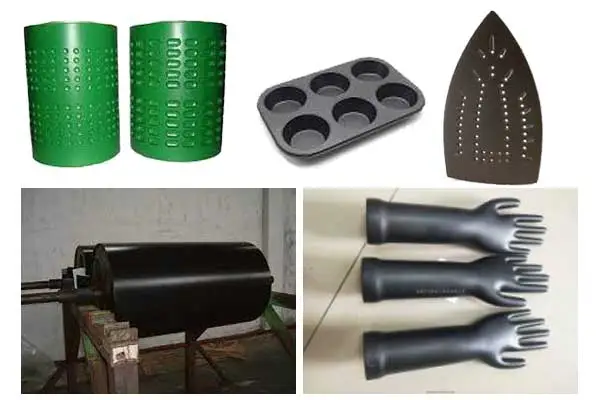Non-Stick Ptfe Coatings
Non-Stick
Very few solid substances will permanently adhere to a “P.T.F.E” coating. And while tacky materials may show some adhesion, almost all substances release easily
Heat-Resistance
There is no decomposition of TFE finishes below 200’C. insignificant decomposition between 200’C and 260’C which requires no special precautions. Between 260’C and 300’C, intermittent service is possible with adequate ventilation.
Cryogenic Stability
Many “P.T.F.E” coatings will withstand severe temperature extremes without loss of physical properties. “P.T.F.E” may be considered for use at temperature as low as -270’C.
Chemical Resistance
“P.T.F.E” is normaly unaffected by chemical environments. However, certain coatings are permeable or have a lower resistance to attack The only chemicals known to affect all “P.T.F.E” finishes are the alkali metals and highly reactive fluorinating agents.
Non-Wetting
Since “P.T.F.E” surfaces are both oleophobic and hydrophobic, they are not readily wet. Clean-up is easier, more thorough and in many cases self-cleaning
Low Coefficient of Friction
The coefficient of friction of “P.T.F.E” is generally in the range of 0.05 to 0.20, depending on the load, sliding speed and particular “P.T.F.E” finish used.
Unique Electrical Properties
Over a wide range of frequencies, “P.T.F.E.” has high dielectric strength, a low dissipation factor and very high surface resistivity. By special techniques, it can even be made conductive enough to be used as an


